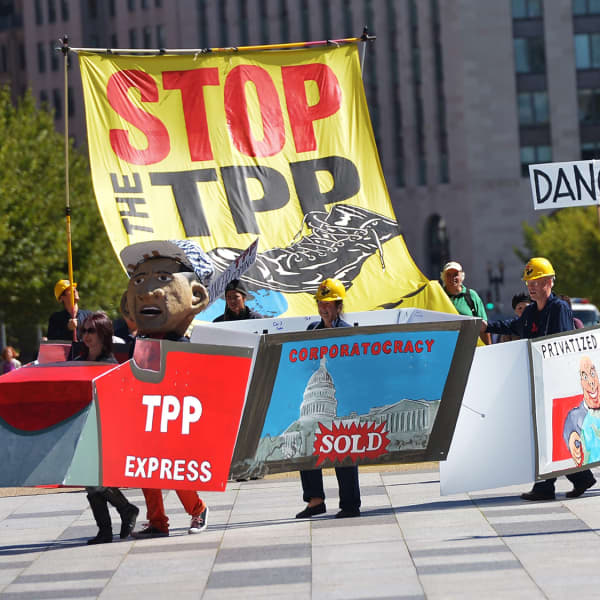There's a lot of misinformation floating around about mom-and-pop stores these days.
The devastating effects of the recession on the U.S. small-business sector were well documented, but as the recovery has progressed, its impact on mom-and-pop stores has been discussed less.
In fact, myths about life as a small-business owner threaten to overwhelm reality. The myths can convince entrepreneurs to pass on opportunities that could be profitable or, conversely, seduce them into chasing opportunities that don't actually exist.
Here are four of the most common mom-and-pop shop myths, along with a healthy dose of small-business reality.
Myth # 1: Mom-and-pop shops are dying
Truth: Small-business confidence isn't at an all-time high, but recent surveys of small-business owners suggest the situation is far from dire.
Recent Wells Fargo/Gallup Small Business Index and National Federation of Independent Business Small Business Optimism Index can be summed up as a "mixed bag" for the small-business sector.
By Wells Fargo's latest measure (released in August), small-business optimism has increased six of the last seven quarters and is at its highest point in more than six years. However, it remains well below prerecession levels.
That's a finding also reflected in the National Federation of Independent Business (NFIB) numbers: It showed a decline in small-business confidence in September, and it now stands at a reading five points below the prerecession level. However, the same survey found that more business owners believe it is a good time to expand their firms and expect better conditions in the next six months. The NFIB findings show that hiring and capital expenditures are the areas in which small-business owners remain most cautious—those two factors were largely responsible for the decline in the overall reading.
Read MoreThe best US consumer market to target for the next 30 years
In a way, this is really no different from the state of big business: Even with cash balances plentiful six years into the economic recovery, corporations have been reluctant to hire in large numbers or significantly increase capital spending.
In fact, cash flow is at a six-year high for small-business owners, Wells Fargo reported, and 43 percent of small-business owners say their revenues are higher than 12 months ago.
"We're not just seeing one component of the surveys improving," said Mark Vitner, managing director and senior economist at Wells Fargo. "We're seeing improvement across the board, and that tells me that this is real."
Myth # 2: Wal-Mart is the big bad wolf
Truth: It's actually more likely to be Amazon these days.
Smaller retailers have always been at something of a competitive disadvantage versus big box stores, due to inventory space. Because they have less square footage to store unsold merchandise, smaller stores are unable to order in the bulk quantities (and, in turn, receive the bulk discounts) of bigger stores. The smaller footprint of the store works against them again in real estate costs, since they often are forced to pay more per square foot for their locations.
But increasingly it's not the Wal-Marts or Targets that mom and pops fear, but online retail companies including Amazon. In a survey of more than 2,600 small businesses by the Institute for Local Self-Reliance earlier this year, 49 percent of the owners said competition from large Internet companies was challenging or very challenging. That number jumped to 69 percent among retailers.
Read More9 ways to get around Facebook's rising ad rates for business owners
In fact, competition from large Internet companies was rated as the No. 1 challenge facing independent businesses, followed by supplier pricing that favors big competitors, high costs for health insurance and escalating commercial rents.
When asked about the competitive threat of large brick-and-mortar companies, only 40 percent of those retailers ranked them as challenging or very challenging. Respondents noted that online retailers, led by Amazon, aren't afraid to lose money on certain items, since they know they'll make it up elsewhere.
This shouldn't be confused with the idea that small-business owners aren't using technology to gain an edge. Just as service can be a key differentiator in stores, mom and pops tend to carry that over to their online presence. Small retailers have increasingly used social media to build a community among customers. Just 27 percent of small-business owners stated they don't use social media in a recent survey.
"Small businesses are better able to keep in touch with what customers have bought in the past, and let them know when they've gotten in a new line of things they might be interested in," Vitner said.
Myth # 3: The 'buy local' trend is revitalizing Main Street
Truth: Great for farmers and restaurants, but not doing much for everybody else.
There has been a groundswell of support coming from local communities in the past few years for select small businesses. "Buy local" movements have been growing across the country, encouraging people to shop at small businesses, not conglomerates.
Not every mom-and-pop has been the beneficiary of that, though. Restaurants have been the biggest benefactors, with local farms coming in second. For retailers, there has been some spillover effect, but much less so.
Advocates say that while the movement is certainly a good one, they'd prefer to see local governments offer more tax incentives and other benefits to all local shops.
"Businesses located in communities that have Localist campaigns are doing better than those in communities without," said Michelle Long, executive director of the Business Alliance for Local Living Economies. But she added, "We need policies that level the playing field if we are to have the kind of success that results in more good jobs and more real prosperity for more people."
Myth # 4: Mom-and-pops do better in small towns
Truth: Urban mom-and-pops are seeing a bigger revival than Main Street businesses.
The vision of a small-town mom-and-pop store serving the community is one of Hollywood's favorites. Increasingly, though, small businesses are finding it better to locate themselves in the heart of a big city.
Downtown Los Angeles, for example, is in the midst of a revival led by independent businesses that provide unique products or services, things the big chain stores can't or don't offer.
"Small businesses in metro areas appear to be doing much better than those in rural areas," said Vitner. "There are certainly some exceptions, but that follows what we've seen with economic growth in those areas."
Read MoreThe biggest small-business risk you aren't protected against: Hacking
While some farmers near metro areas are able to capitalize on the urban Farmer's Market boom and take advantage of the "buy local" trend, the same can't be said for traditional, rural farm communities. The Institute for Local Self-Reliance found that more than 75 percent of businesses located in cities with active "buy local" campaigns reported increased customer traffic or other benefits from these initiatives.
Many rural areas, meanwhile—especially those tied to agriculture—are actually tougher for small businesses today, Vitner said, as commodity prices have come down, slowing the local economy.
Population is part of the story: "The population living entirely outside metropolitan areas—nearly two-thirds of the nation's 3,100 counties—shows an actual population loss for the third year in a row. At the other end of the spectrum, the nation's largest metropolitan areas are growing at far higher rates," according to a recent Brookings Institute analysis.
But a key factor in this urban revival of small business is size: It's not necessarily the biggest cities in the U.S. that are the best metro areas to set up shop. Sixty-three percent of small-business owners said smaller cities are better for small business than the largest cities in the U.S., citing first-class networking, low taxes, minimal regulations, high-quality talent pools, affordable commercial real estate, lower living costs and availability of federal contracts, according to a semi-annual survey by Rocket Lawyer of small-business owners.




